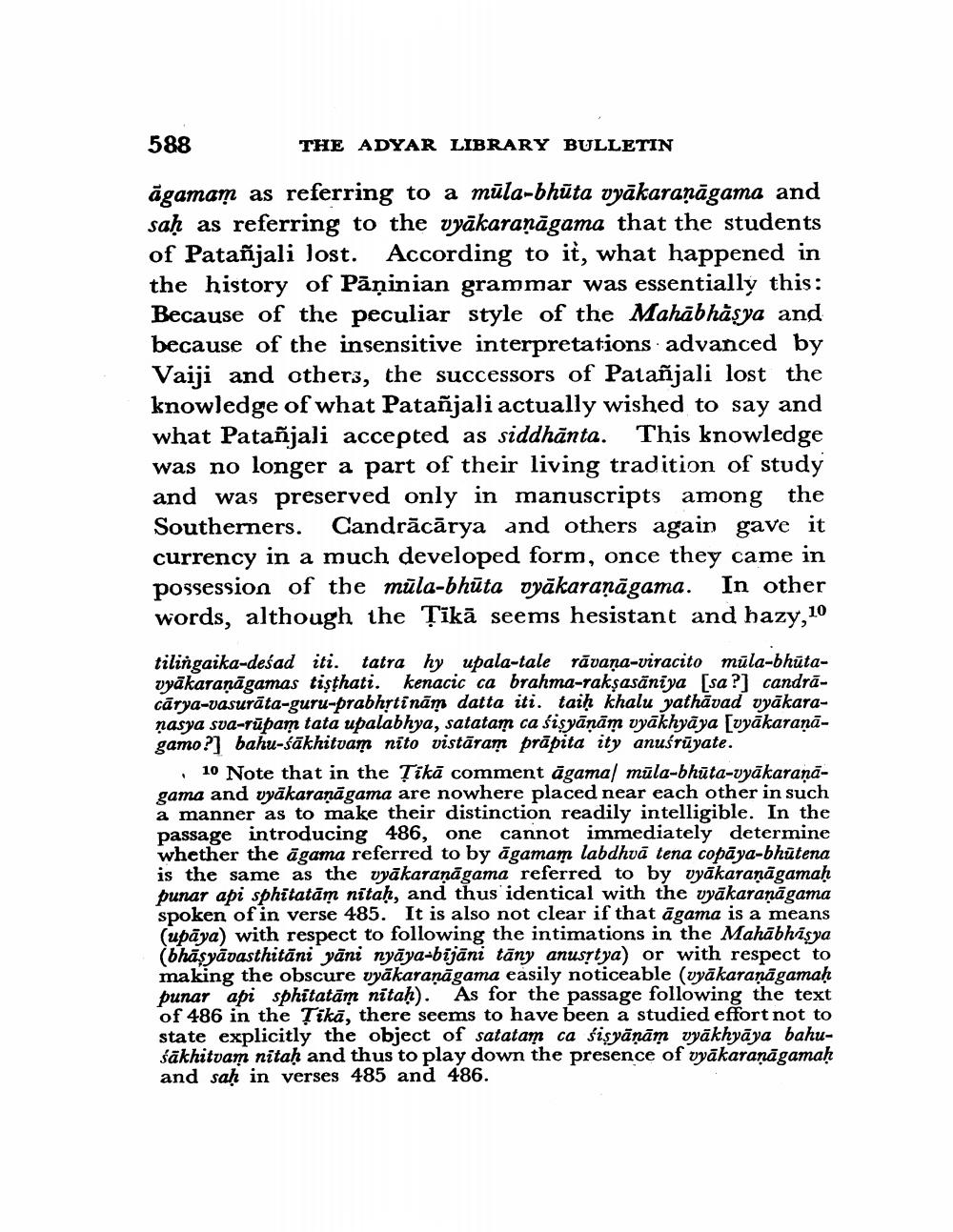Book Title: Interpreting Vakyapadiya Historically Author(s): Ashok Aklujkar Publisher: Ashok Aklujkar View full book textPage 8
________________ 588 THE ADYAR LIBRARY BULLETIN āgamam as referring to a mūla-bhūta vyākaraṇāgama and saḥ as referring to the vyākaraṇāgama that the students of Patañjali lost. According to it, what happened in the history of Pāņinian grammar was essentially this: Because of the peculiar style of the Mahābhäsya and because of the insensitive interpretations advanced by Vaiji and others, the successors of Patañjali lost the knowledge of what Patañjali actually wished to say and what Patañjali accepted as siddhānta. This knowledge was no longer a part of their living tradition of study and was preserved only in manuscripts among the Southerners. Candrācārya and others again gave it currency in a much developed form, once they came in possession of the mūla-bhūta dyākaraṇāgama. In other words, although the Țīkā seems hesistant and hazy, 10 tilingaika-deśad iti. tatra hy upala-tale rāvana-viracito mūla-bhūtavyākaranāgamas tişthati. kenacic ca brahma-rakşasäniya [sa?] candracārya-vasurāta-guru-prabhịtinām datta iti. taiḥ khalu yathāvad vyākaraṇasya sva-rūpam tata upalabhya, satatam ca śisyāņām vyākhyāya [vyākaraņāgamo?] bahu-śākhitvam nito vistāram prāpita ity anuśtūyate. 10 Note that in the Țikā comment āgamal müla-bhūta-vyākaranagama and vyākaraṇāgama are nowhere placed near each other in such a manner as to make their distinction readily intelligible. In the passage introducing 486, one cannot immediately determine whether the āgama referred to by agamam labdhvā tena copāya-bhūtena is the same as the vyākaraṇāgama referred to by vyākaraṇāgamaḥ punar api sphitatām nitah, and thus identical with the wyākaranāgama spoken of in verse 485. It is also not clear if that āgama is a means (upāya) with respect to following the intimations in the Mahābhasya (bhasyavasthitāni yāni nyāya-bijāni tāny anusītya) or with respect to making the obscure vyākaraṇāgama easily noticeable (vyākaraṇāgamah punar api sphitatām nitaḥ). As for the passage following the text of 486 in the Țikā, there seems to have been a studied effort not to state explicitly the object of satatam ca śisyānām vyākhyāya bahuśākhitvam nitaḥ and thus to play down the presence of vyākaranāgamaḥ and saḥ in verses 485 and 486.Page Navigation
1 ... 6 7 8 9 10 11 12 13 14 15 16 17 18 19 20 21
